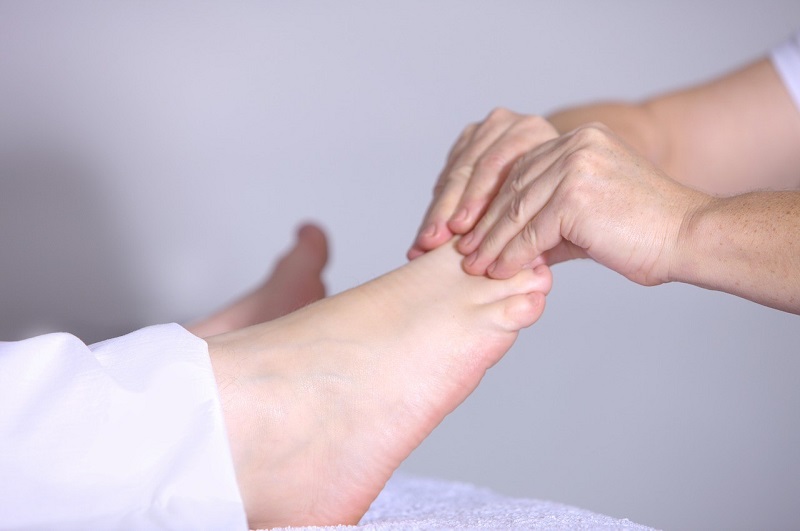The plantar fasciitis is a common cause of foot pain, both athletes and sedentary people. The pain occurs in the foot, at the front of the heel, being a pain that worsens when walking or exercising.
Being a common injury in athletes as much in the general population, we will discuss the causes, prevention and treatment of plantar fasciitis in this article.
What is the plantar fascia?
The plantar fasciitis is an injury that affects the fascia or plantar fascia, a thick band of connective tissue that is in the sole, and runs from the front of the calcaneus (heel bone) to the front fingers.
The plantar fascia is a support structure to absorb the impact and maintain the shape of the foot. Upon reaching the toes, the fascia is divided into five bands.
I take this opportunity to point out that the suffix it is refers to inflammation but, as in the usual tendinitis, rarely a real inflammation is present (so we recommend talking about tendinosis). In the case of fasciitis same thing happens: rarely no real inflammation, so maybe I should change the term to fasciosis (which simply indicates an alteration, without specifying what type).

Causes of plantar fasciitis
Both poor fitness as exercise or too untimely attempt may favor the appearance of this type of problem. Let’s review some known causes of plantar fasciitis…
- Overweight
- Sedentary lifestyle. Spend much time standing.
- Alterations in the arch of the foot (flatfoot or cavus foot)
- Shortening of the Achilles tendon
- Excessive pronation
- Limited ankle dorsiflexion
- Weakness in the muscles of the foot (and the region of the sole)
- Mal fitness
- Surface too hard
- Stretches inadequate (or no stretch)
- Inappropriate footwear
As we see, are causes both the subject itself as the medium or material used. Therefore, initially in terms of prevention it is to limit these known risk factors.
Prevention of plantar fasciitis
- Acting on the predisposing factors is the best idea to avoid the appearance this problem. Control overweight, avoid sedentary lifestyle, avoid spending too much time standing … they are some useful measures that can be taken from now.
- Training specific muscles of ankle and foot will help the area is protected and prepared, to reduce the risk of this injury.
- Improve ankle mobility, especially dorsiflexion, will help reduce the likelihood of this injury. The dorsiflexion of the ankle (the ankle movement by which the toes are close to the tibia) helps to also improve the squat, so it’s a workout to keep in mind.
- Effort as running or jumping on a too hard surface also influences the occurrence of this problem. Running many km without adequate preparation (accumulate many km per week, or make them at a high rate) can cause plantar fasciitis occur?
- Stretches specific muscles of the foot and Achilles tendon can help reduce the risk of injury. Moreover, not caring footwear that is worn or not appropriate, also it influences foot injuries.
Treatment of plantar fasciitis
- To start, emphasize that a very important treatment as part of prevention: correct mistakes that often provorar that fasciitis develops plant is the first step to take if you are an athlete or person having predisposing factors (sedentary lifestyle, overweight, spending much time standing…).
- If we have the plantar fasciitis instituted, physiotherapy treatment usually involves pain relief techniques (mobilization, stretching, massage, electrotherapy application techniques …). All aimed at reducing pain and allow mobility.
- The use of templates can also help, by being templates that cushion the impact and reduce pressure on the affected area, but must be used together with other treatment techniques.
- There is a taping for plantar fasciitis. This type of bandage used fairly rigid strips that what they do is reduce the tension of the plantar fascia, thus helping to bother less and would support or even compete (logically depends on the case, an individual assessment is necessary):
- As for stretching exercises, there is evidence that help relieve pain and improve recovery in case of plantar fasciitis.
- Use foam roller or a cylindrical surface (even a cold can of soda), for this exercise, slide the roll with your foot.
- For the second exercise stretching, cross your legs, placing the injured foot on the opposite thigh. With one hand, hold your heel. With the other, taken from the fingertips and bring them up, you should feel the stretch in the sole. You can repeat 2-3 times a day, doing several repetitions (holding about 10-15 seconds).
- Sitting stretching, using a towel. You can do it also sitting on the bed or on a mat (if the surface is rigid, the better). With both legs, use a towel to surround the foot, leaving the towel at the base of the fingers. You strip with both hands towel to cause ankle flexion, carrying fingers also up. You’ll notice stretch in the foot and Achilles tendon. You can do 2-3 sets per day, keep at least 30 seconds.
Another useful exercise, recommended in the literature that I have quoted above, is similar to that used in pathology Achilles tendon and is the eccentric exercise is done in one step.
You have to stand on tiptoe to the edge of the step, using the strength of both feet. Then, you remove the foot does not affect, and low using the foot where you have the lesion (hence the eccentric exercise is done). However, for this exercise to be effective for plantar fasciitis would have to do it barefoot and treading a towel, which will be located under the toes, to increase the incidence of work on the plantar fascia.


